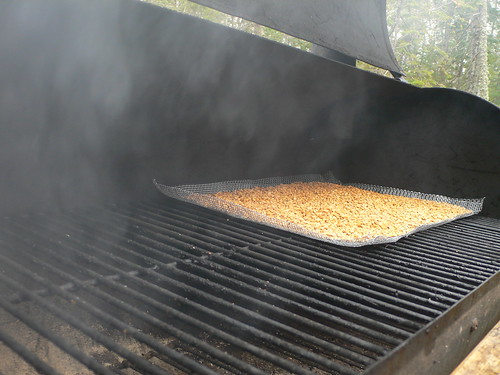Smoked beers were not something a brewer was striving for but a consequence of the world before the industrial revolution. Before there were alternative sources of energy there was fire, and with that fire there was smoke. Maltsters and brewers only available option to cure (dry) their malted grain was fire. Back in those times there would have been little the maltsters could do to shield the grain from the smoke, thus the grain was imparted with a smokey flavor that was then passed onto the finished product.
In different areas of the world different burning fuels were used which effected the finished beer. These fuels coincided with what was commonly used in the region. In Great Britain compacted peat was used, as was straw, which gave the malted grain a less smokey taste. In what we now call the middle east (the origin of beer) malts could be dried by the ever prevalent desert sun but was also dried in bread ovens that probably would have been fired by the most prevalent fuel source which was ox dung. In most of Europe however wood was the fuel of choice and this gave the malt the most pungent smokey flavor. Beechwood was chose not because of the flavor that it imparted but because of the high energy density per log and it's clean burning manner.
With technology came cleaner burning fuels that left trusty old wood in ashes. Brewers strived for cleaner tasting beers, well brewers in all areas with the exception of the tradition obsessed country of Germany. Today we see smoked beers in a resurgence as the craft brewing world meets the culinary word.




interesting. where do you find this knowledge?
ReplyDeleteThis was a collaboration of research from Randy Mosher's Radical Brewing, Wikipedia, and some other sources.
ReplyDelete